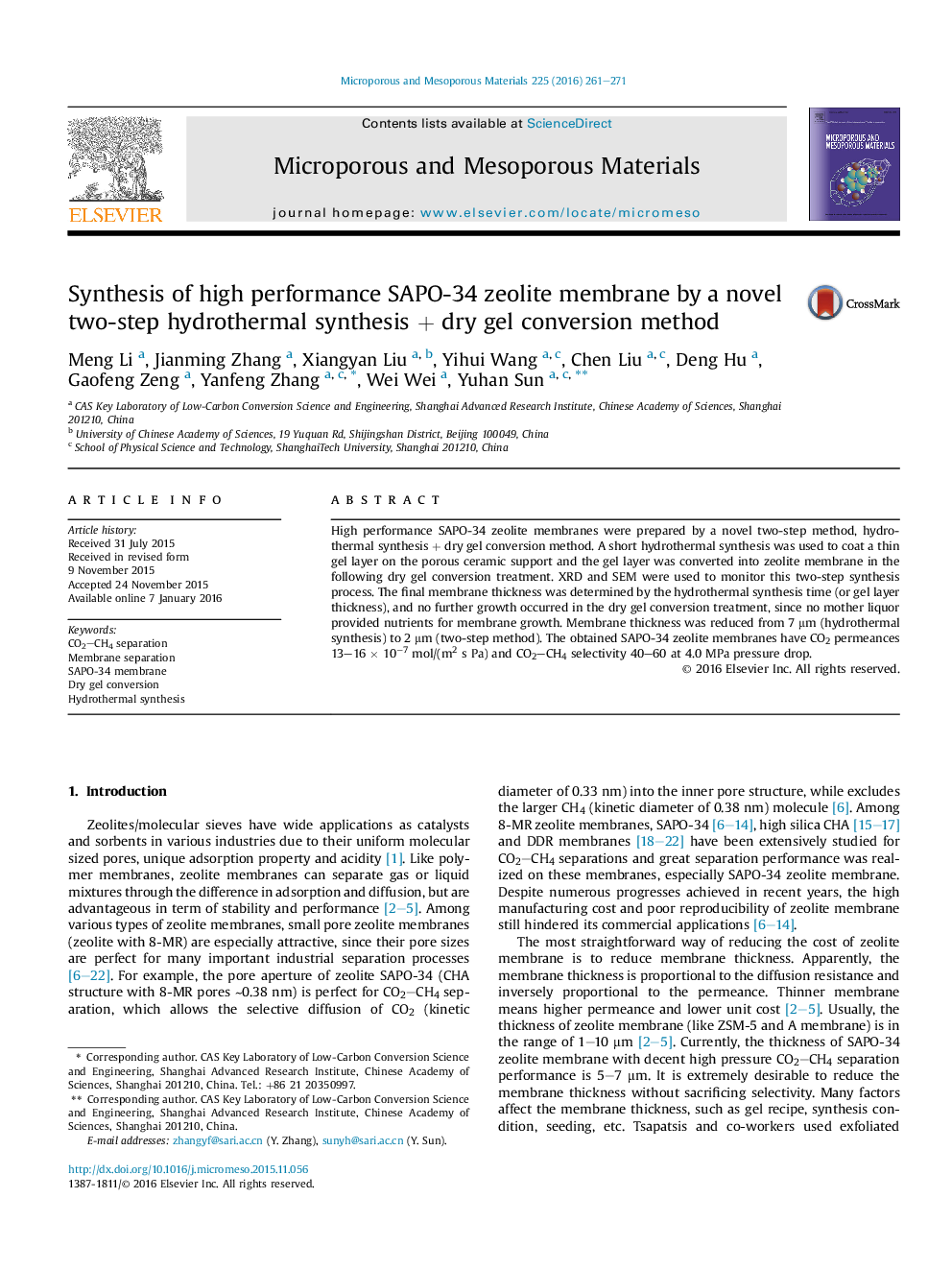| Article ID | Journal | Published Year | Pages | File Type |
|---|---|---|---|---|
| 72089 | Microporous and Mesoporous Materials | 2016 | 11 Pages |
•SAPO-34 membrane made by a novel two-step hydrothermal + dry gel conversion method.•Investigated the formation mechanism of SAPO-34 zeolite membrane.•Substantially reduced the membrane thickness from 7 μm to 2–3 μm.•CO2 permeances of ∼16 × 10−7 mol/(m2 s Pa) and CO2–CH4 selectivity of 50 at 4.0 MPa.
High performance SAPO-34 zeolite membranes were prepared by a novel two-step method, hydrothermal synthesis + dry gel conversion method. A short hydrothermal synthesis was used to coat a thin gel layer on the porous ceramic support and the gel layer was converted into zeolite membrane in the following dry gel conversion treatment. XRD and SEM were used to monitor this two-step synthesis process. The final membrane thickness was determined by the hydrothermal synthesis time (or gel layer thickness), and no further growth occurred in the dry gel conversion treatment, since no mother liquor provided nutrients for membrane growth. Membrane thickness was reduced from 7 μm (hydrothermal synthesis) to 2 μm (two-step method). The obtained SAPO-34 zeolite membranes have CO2 permeances 13–16 × 10−7 mol/(m2 s Pa) and CO2–CH4 selectivity 40–60 at 4.0 MPa pressure drop.
Graphical abstractFigure optionsDownload full-size imageDownload as PowerPoint slide
